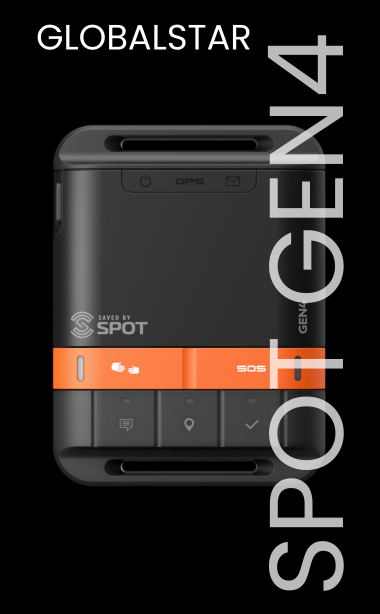You have no items in your shopping cart.
The first question to ask yourself is what kind of equipment you are trying to charge and how many recharges you expect to make? Many times the best solution is to carry a spare battery -- not get a solar panel. If you need more power, Outfitter Satellite offers rechargeable fuel-gauged battery packs with outputs suitable for small electronics that can be recharged via USB or with auto-accessory chargers.
The main reason for getting a solar panel is that you expect to have daily power consumption needs in excess of what you can easily bring along with you. If you are going to purchase a solar panel, you need to understand what it can realistically do and make sure you have the correct cables to charge the device you are using with it.
If you select a stand-alone portable solar panel without the benefit of an external rechargeable battery pack (which Outfitter Satellite highly recommends), you need to realize that the smaller the solar panel wattage rating is, the more sunlight you will need to successfully recharge your device. While a small 6-Watt solar panel will recharge a handheld satellite phone (e.g. an Iridium 9555 or Thuraya XT equipped with an auto-accessory charger) in 8 to 10 hours of good sunlight, a larger 12-Watt or 26-Watt panel usually will do so even under partially cloudy conditions and in less time while costing only a small amount in extra equipment weight.
Be sure to test that the solar panel can successfully charge your satellite phone -- starting from an empty battery condition. Do this long before you intend to leave for a remote location. That means do not wait until the evening before you leave. This way you will be prepared and know what to expect.Recently, we had a client that returned from a multiple week hiking trip in Nepal and complained that he was never able to use his Iridium satellite phone because the solar panel "didn't work". His companions on the trip assured him that Outfitter Satellite had not sold him the correct cables or the correct solar panel. Amazingly, he returned the equipment to us, and the DC car charger was unopened in its original packaging! Obviously, he failed to test his equipment and understand how it worked before he left for Nepal. Everything he needed was in the kit, but the solar panel comes with a lot of adapter cables to maximize its usefulness and this can be confusing. Our client had left some of the cables and the DC car charger at home! The back country of Nepal is not an ideal place to learn how to use your equipment.
If I am taking a back country trip, safety and reliability are my main concerns and I never worry about a little extra expense or a little extra weight. I have often regretted my economies but never my excesses. My choice for a portable back country power production and storage capability would be a 26-Watt solar panel and a rechargeable external Sustain battery pack with a fuel gauge. This should be more than enough for most applications. I would keep topping off the Sustain battery pack whenever I had a chance. The Sustain external battery pack is shown (above right) connected to an ultra-light Thrane & Thrane EXPLORER 100 BGAN terminal. The Sustain acts as a UPS power supply and can receive charge from an external power source such as a solar panel even while powering the BGAN. The Sustain increases the operating time of the BGAN by over 300%.
So far, this article has been about 6-watt and larger panels. Outfitter Satellite also sells ultra-mini solar panel battery pack combinations. It definitely takes more understanding and more patience to use an ultra-mini solar panel but it does cut down on equipment size and weight and may be suitable for applications where very minimal amounts of power are needed.
A good example of an ultra-mini solar charger solution is the Restore solar panel. The Restore has an integrated 2200 mAh 5 Volt Li-Ion battery that can be used to charge a Thuraya XT satellite phone very reliably. If you start with a fully discharged Thuraya XT, you will need to fully charge the Restore and connect it to the Thuraya XT two or three times. Just keep laying the Restore outside with its solar panel pointed at the sun. Every time the Restore battery reaches 100% as shown by its fuel-gauge, reconnect it to the Thuraya XT using the Thuraya XT's USB data cable. It is time consuming if you let the Thuraya XT get fully discharged, but not so bad if you keep topping off the Thuraya XT every day.
Here are a few general hints to keep your solar panel experience successful:
- It is important to tilt the solar panel towards the sun to get maximum power. This will be especially important when using a smaller panel. One way to do this is by using a pencil pointed straight out of the plane of the solar panel. When the panel is pointed straight towards the sun, the pencil will have no shadow -- and you will have optimal power from the solar panel.
- If your electronics is not designed for variable voltage power supplies, it is better to use your solar panel with an external battery pack like the Sustain that can handle power brown outs. Brown outs occur in partially cloudy conditions or when someone walks in front of and shadows your solar panel. Definitely, disconnect electronics from the solar panel well before the sun goes down, too.
- If it is a hot day, try to keep the electronics being charged out of direct sunlight. Their internal Li-Ion batteries will charge more slowly when they are hot. It is amazing how hot direct sunlight can make a black Iridium satellite phone on a summer day!
- There is a small battery symbol in the upper right corner of the LCD screen of both the Iridium 9555 and Thuraya XT that shows the charge state: a solid black battery indicates a full charge while the empty battery is white. It is not desirable to let the Li-Ion battery in a satellite phone get completely depleted. If you do this, sometimes it is hard to restart the satellite phone until it has been charging for several hours. I recommend you recharge and top off your Li-Ion battery as often as possible.
- Test the solar panel and/or portable battery pack before leaving for a remote location. Make sure you have the cables you need to charge your satellite phone or other electronics. You need to have the right equipment and know how to use it.
 English
English











